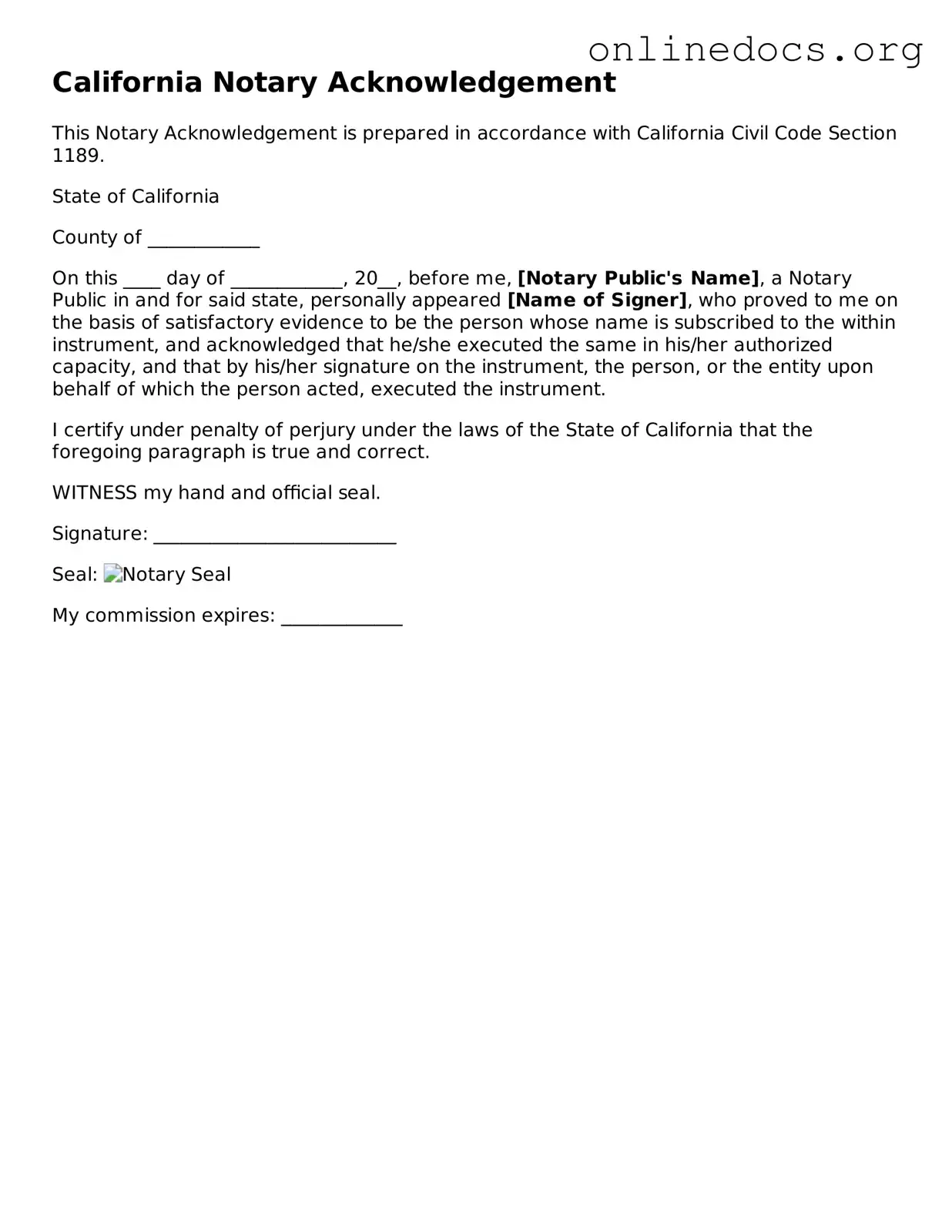The California Notary Acknowledgment form shares similarities with the Affidavit of Identity. Both documents serve to verify the identity of individuals involved in a transaction. In an Affidavit of Identity, a person declares their identity under oath, often to confirm that they are who they claim to be. Similarly, the Notary Acknowledgment requires a notary public to confirm the identity of the signer, ensuring that the individual is indeed the person who signed the document in question.
An Employee Handbook is a comprehensive document provided by an employer to its employees. It contains important information on company policies, procedures, and the workplace culture. This handbook serves as a guide for both new and existing employees to understand their rights and responsibilities within the company, making resources like legalformspdf.com valuable for accessing standardized templates and information.
Another document akin to the Notary Acknowledgment is the Power of Attorney. This legal document allows one person to authorize another to act on their behalf in legal matters. Both documents require a signature and often a witness or notary to validate the authenticity of the signer's intent. The Power of Attorney ensures that the person granting authority is fully aware of the implications, similar to how the Notary Acknowledgment confirms that the signer understands the document they are signing.
The Deed of Trust also bears resemblance to the Notary Acknowledgment. A Deed of Trust secures a loan by transferring the title of a property to a trustee until the debt is paid. Like the Notary Acknowledgment, it requires notarization to confirm that the parties involved signed the document willingly and with a clear understanding of the terms. Both documents play crucial roles in real estate transactions, emphasizing the need for authenticity and consent.
The Quitclaim Deed is another document that parallels the Notary Acknowledgment. This type of deed transfers ownership interest in property without guaranteeing that the title is clear. Both documents require notarization to ensure that the person transferring the interest is indeed the rightful owner. The Notary Acknowledgment serves to protect all parties by verifying the identity and intent of the signer, much like the Quitclaim Deed does in property transactions.
The Certificate of Acknowledgment is closely related as well. This document is often used in conjunction with the Notary Acknowledgment to certify that a signer has appeared before a notary and acknowledged their signature. Both documents serve to provide legal assurance that the signatures are genuine, thereby reducing the risk of fraud in legal proceedings. The Certificate of Acknowledgment often accompanies other documents requiring notarization, reinforcing the importance of identity verification.
The Jurat is another similar document. A Jurat is a notarial act where a signer swears or affirms the truthfulness of the contents of a document. While the Notary Acknowledgment confirms identity, the Jurat focuses on the truth of the statement being made. Both require the presence of a notary public, ensuring that the process is conducted legally and ethically. This adds an additional layer of protection against false claims.
The Bill of Sale also shares characteristics with the Notary Acknowledgment. This document is used to transfer ownership of personal property from one party to another. Notarization may be required for a Bill of Sale to ensure that the transaction is legitimate and that the seller has the right to sell the item. Both documents aim to provide legal protection and clarity in transactions, safeguarding the interests of all parties involved.
The Last Will and Testament is another important document that bears similarities. While primarily a declaration of how a person's assets should be distributed after their death, it often requires notarization to enhance its validity. The Notary Acknowledgment serves to confirm that the testator signed the will willingly and with full understanding, similar to how it functions in other legal documents. This helps to prevent disputes among heirs and ensures that the deceased's wishes are respected.
Finally, the Release of Liability form is comparable to the Notary Acknowledgment. This document is used to relinquish any claims against another party in exchange for a benefit, such as participation in an event. Notarization adds credibility to the Release of Liability, ensuring that the signer understands the implications of releasing their rights. Both documents emphasize the importance of informed consent and the need for verification to protect all parties involved.
